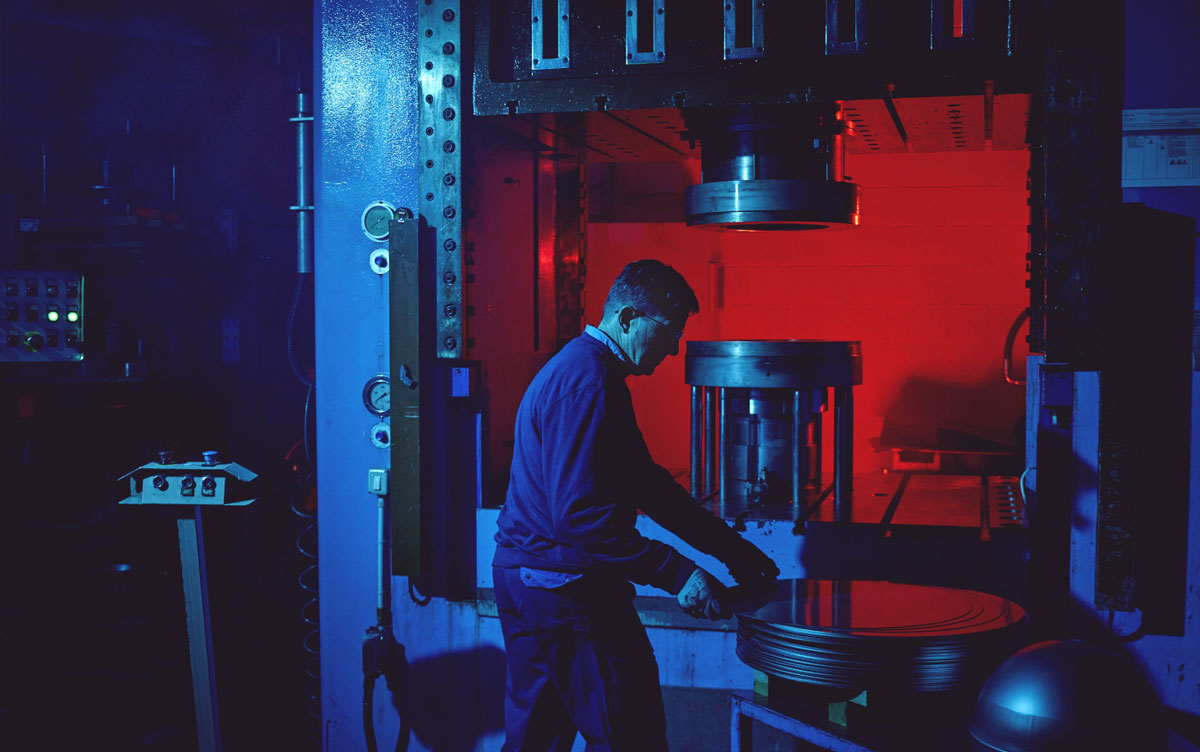Technical features
Sheet metal deep-drawing is a type of machining process that deforms the sheet metal by using mechanical and hydraulic presses. This makes it possible to obtain concave-shaped products such as containers, vases, pots, chandelier domes and much more.
Just like spin forming, the first step in deep-drawing is the creation of a specific mould for the type of production that will be machined. Once created, under the pressure of the press, the sheet metal shape is forced to pass through the thin space between a punch and the mould, thereby obtaining the desired shape, without any unappealing creases.
Drawing is defined as deep since it refers to the creation of a product having great depth. One passage is sometimes sufficient, but other times, it is necessary to repeat the operation in order to create a functional and aesthetically perfect product.
This process actually has the advantage of making it possible to create a product that has no unappealing welding since it is shaped out of a single sheet metal plate, and at the same time, it is highly resistant to impacts and stress.

Materials that can be machined by using the deep-drawing technique include stainless steel, brass, copper, aluminium and iron. The maximum working surface is 1600*1300 mm, with a minimum thickness of 0.5 mm and maximum thickness of 3 mm
The factors in order to obtain a perfectly successful deep-drawing process are, on the one hand, modern professional machinery of the highest precision and, on the other hand, highly specialised and qualified personnel capable of professionally operating the machines. The many of years of experience in the industry has enabled us to achieve the highest standards of precision combined with prompt delivery.